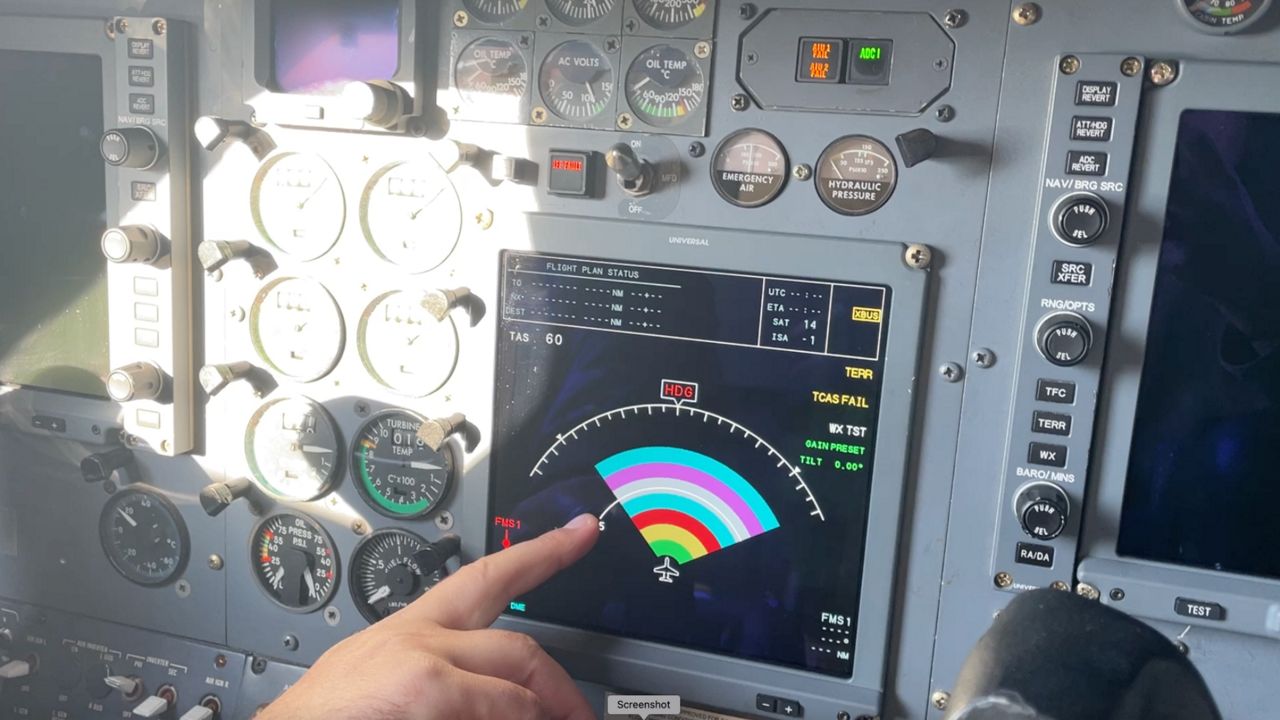BELLEVILLE, Ill. – Scott Air Force Base in Belleville, Ill. features something unique to the Air Force: the C-21 Jet. These planes–developed in the 1980s, purchased from commercial airlines and outfitted for the Air Force–transport high-ranking military officials for important missions.
I caught up with Air Force Pilot Lieutenant Nicholas Felton and discussed how the weather can affect a mission.
All pilots have a good understanding of basic weather concepts and know how to interpret weather maps. It’s part of the training, Lieutenant Felton explained to me.
As for weather specifics, there’s an Air Force meteorology team that briefs the pilots weekly and daily, even as often as every few hours, depending on the weather situation, so they can plan their flight plan. Adding “there’s even someone on call in case a pilot has questions, which they have come in handy a lot.”

Equipped with radar on board the plane, the pilots can navigate away from harsh weather and alter their flying positions. This is most beneficial at night when it’s not possible to see conditions visually.

With these missions of high importance, they don’t get canceled easily, but as Lieutenant Felton explained, if weather warrants safety concerns, plans would change.
One of those instances would include severe turbulence. “That is predicted in that area that would prevent us from going into that air space or that level of that air pocket that is predicted.”
With higher chances of thunderstorms in the Midwest in spring, Felton adds a pilot does not want to fly through a squall line (extensive area of thunderstorms that “line up” north to south).
“A huge line of thunderstorms that moves across the United States west to east and with that typically comes turbulence on the front half.”
“Super low visibilities where you can’t see far enough ahead of you,” is another instance that would change a flight plan.
While his job has him ready for anything. His most dangerous weather element encountered occurred from wild fires out in California that blew into Oklahoma. A phenomenon called “St. Elmo’s” lightning. “Flying in it in Oklahoma little pockets almost looks like little sparks of lightning.”
Part of the plan for the day included a short flight for members of the media to fly by the St. Louis Arch.
Check out my flight experience and the views from above!
Lieutenant Felton assured me we were in “VFR” or Visual Flight conditions, meaning he could fly without the use of his weather instruments and “use his eyeballs” as he said, to see visibly clear skies and the altitude. He added that for the elevations flying, our ride should be mostly smooth, with minimal turbulence.
Famous last words. I’m one who doesn’t get motion sick all that much, but the speed at which we traveled, combined with the elevation flying, around 1000 to 2000 feet, had me regretting my breakfast choices.
Thankfully, I could keep it all down, but we hit a few air pockets along the way. Lieutenant Felon told me we could have flown much faster. The Jet can “reach a speed of up to Mach 0.81, 81% the speed of sound.”

The sights were absolutely stunning. The fall foliage in southern Illinois to the view of the Arch from above made that spinning feeling in my head worth it.
I also appreciated the Air Force Pilots who do this job routinely. As the only base in the country with these C-21 jets, being able to pilot these jets at a moment’s notice makes these jobs all that more important. “Every high-ranking official that needs to use a C-21 comes out of Scott.”










